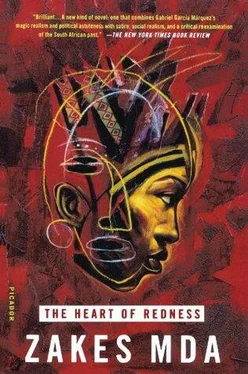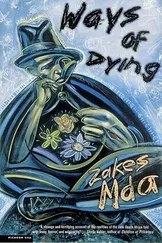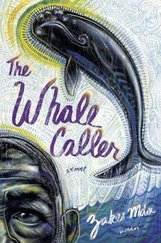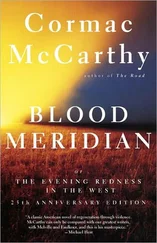The governor then broke into a smile, and told them how he loved the amaXhosa people and that he didn’t want to see them destroying themselves. He had established health programs for them, which were an unqualified success. There was, for instance, a Dr. Fitzgerald who had come with him from New Zealand. He was an ophthalmic surgeon, and he performed cataract operations that gave him fame throughout kwaXhosa as a man of miracles who could make blind people see. Fitzgerald was treating more than fifty people a day. But what amazed The Man Who Named Ten Rivers was that even those amaXhosa who benefited from Fitzgerald’s medicine continued to go to their own traditional doctors as well.
“It is because Fitzgerald heals only the ailing body,” explained Twin-Twin. “But our amaXhosa doctors are also spiritual healers. They are like priests in your churches of amaGqobhoka. They don’t only end there. They heal the head and the mind.”
“That is precisely what we must change,” said the governor. “We must get rid of all these superstitions. That is what civilization will do for you. That is another matter I have been discussing with the chiefs. You see, I plan to open a school in Cape Town for the sons of chiefs, where they will grow up in the bosom of British civilization. They will learn to appreciate the might of the British Empire and will acquire new modes of behavior. They will give up their barbaric culture and heathen habits, and when they take over in their chiefdoms they will be good chiefs. I want all the chiefs to undertake to send their sons to this school.”
“The chiefs that you have already met. . what do they say?” asked Nxito.
“For some reason they are reluctant. They don’t understand. They think they will be giving up their children. It is for elders like you who have a better understanding of these things to convince them otherwise.”
The Man Who Named Ten Rivers said he was heartened by the manner in which he was received by the chiefs throughout the territories he visited. It showed that his pacification and civilizing missions were succeeding. As soon as he reached Cape Town in a few weeks’ time he would write to the colonial secretary of state in England to brief him fully that the Xhosa people were not at all hostile to the colonial administration.
“A few weeks’ time?” asked Gawler. “Does this mean His Excellency hasn’t completed his rounds on the frontier?”
“I still have a few chiefs to see before I go back to Cape Town,” replied the governor.
“I fear for His Excellency’s health,” said Gawler. “This trip has been quite rigorous.”
The Man Who Named Ten Rivers was irritated. He felt that the young upstart was undermining his manliness and his vast experience as an English explorer who had pioneered some of the most dangerous places in the new world, who had walked uncharted territories in Australia and New Zealand, and who had given names to ten rivers. Gawler apologized and assured His Excellency that he had not meant to be disrespectful.
Perhaps the governor should have heeded the magistrate’s friendly warning. Before his rounds on the wild frontier were over, he suffered a nervous breakdown and had to be sent back to Cape Town hallucinating and blubbering.
While Twin-Twin was discussing civilization with The Man Who Named Ten Rivers, Twin was dreaming of Heitsi Eibib. He used the dreams to transform himself into the new Heitsi Eibib of the amaXhosa people, the one who would lead them across the Great River, in the same way that the true Heitsi Eibib of old had led the Khoikhoi people. The same way that he had instructed the water to part, and when it obeyed he led his people to safety. But when the enemy tried to cross between the parted water. . when the enemy was in the middle. . the water closed in again, and the enemy drowned. Only in Twin’s dreams, the enemy that was swallowed by the Great River was led by The Man Who Named Ten Rivers, accompanied by none other than the famous headhunter, John Dalton.
Whenever Twin awoke from such dreams, his fervor for the girl-prophets multiplied tenfold.
He was distressed about the rift between himself and Twin-Twin. He blamed it all on his twin brother’s stubbornness. And on his father’s headlessness. Because the British had cut his head off, Xikixa was not being an effective ancestor. A good ancestor is one who can be an emissary between the people of the world and the great Qamata. A good ancestor comes between his feuding descendants whenever they sacrifice a beast to him, and brings peace among them. Without a head Xikixa was unable to bring cohesion to his progeny. That was why they were fighting among themselves, and were destined to do so until his headless state was remedied.
Only the resurrection of the dead could restore the elder’s dignity. And the dignity of all the amaXhosa people, dead or alive. It would bring about a regeneration of the earth. The new redeemer that the girl-prophets talked about, son of Sifuba-Sibanzi the Broad-Chested One, would lead this re-enactment of the original creation. The long-departed relatives of the amaXhosa people would come back from the world of the ancestors and would once more walk the earth of the living. The white colonists would disappear. So would the lungsickness that they had brought from across the oceans.
The greatest joy of the Believers was that Prophet Nxele — who had drowned trying to escape from Robben Island some thirty years before — would come back and lead the people to victory over the colonists, in the same way that he had led the Russian army that had vanquished Cathcart in the Crimean War. It did not matter that Mjuza, Nxele’s son and heir, had rejected the prophecies of Nongqawuse. Mjuza was a lost cause who had been deceived by his colonial masters.
These were the happiest times for Twin and Qukezwu. They had few cares in the world. They wandered on their uncultivated fields or on the sands of the sea, daydreaming of the wonderful life that awaited them. They sang the praises of Mhlakaza, Nongqawuse, and Nombanda. Their hearts overflowed with love and goodwill. So did the hearts of all Believers.
And they looked beautiful too. Ever since Nongqawuse had ordered her followers to adorn themselves in their finery in celebration of the imminent arrival of the ancestors, Qukezwa would not be seen without her makeup of red and yellow ochre. Even old women who had long given up the practice of decorating themselves were seen covered in ochre and resplendent in ornaments. They knew that as soon as the ancestors arrived from the Otherworld, their youth would be restored.
Finally the date of the resurrection was set by the prophets. The full moon of June 1856. The Believers waited with anticipation. But the day came and went like any other day. No miracles and wonders were seen at the Gxarha. Nor anywhere else in the lands of the amaGcaleka and throughout kwaXhosa. This was the First Disappointment.
Some Believers began to unbelieve, and King Sarhili was roused to anger. He called an imbhizo at his Great Place, where all the important men of the amaGcaleka clan were invited.
“How can we trust these prophets when they fail to keep their word?” he asked. “Why are they keeping the new people from rising? Until the prophets keep their word I shall command that the slaughter of the cattle should stop.”
“Mhlakaza must be forced to show us the new people!” cried the men. “He must prove to us that his word is true!”
When the prophet of Gxarha was finally hurled before them, he explained that the ancestors had failed to arise because on that day they had gone on a visit to an inaccessible corner of the Otherworld. He had been unable to get hold of them. Why, they had even been beyond the reach of greater prophets like Nongqawuse and Nombanda.
Читать дальше












